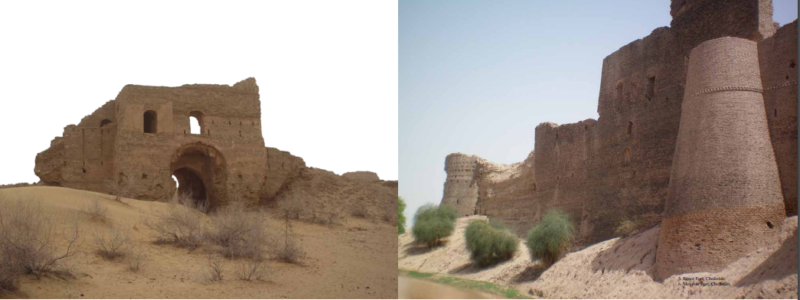“South Punjab, in particular, the districts of Multan and Bahawalpur…, have a vast range of cultural assets. the living culture of the communities carries influences of the inherited ancient civilizations and historical past which flourished in this region and has permeated their present day culture and its expressions. Cultural zones within these two districts are discernable which have infused the living culture of communities influencing their lifestyle, value system and world view; giving the South Punjab region a distinct cultural identity reinforced through their shared language, Saraiki. the earliest, dating back to 3800 BCE, is that of the Cholistan desert, the Rohi made famous by the region’s premier Sufi Saint Khawaja Ghulam Fareed. Although the built assets are contained within the desert yet its intangible expressions of poetry and oral narratives, song and dance is embedded within the culture of the region, in particular Bahawalpur. The influences of the material culture of the ancient people of the Hakra Valley Civilization can still be found in the pottery making traditions and in the motifs and designs which continue to be used. The other identifiable culture ethos permeating the living culture of the region is that engendered by the advent of the Sufi saints in the 10th century onwards. The Sufi philosophical and material culture emanated from the ancient cities of Multan and Uch Sharif, the central abode of mystical Islam in the region, which had far reaching impact on the whole of South Punjab and further into Sind and Northern India. The erstwhile Bahawalpur State (1802-1955 CE) has also had deep influence on the culture of the district and the built form engendered during the State period has left an indelible mark on the built environment of the entire area, most prominent in its capital city, Bahawalpur and the twin capital Dera Nawab Sahib….”
Read the full report by UNESCO here: http://unesco.org.pk/culture/



